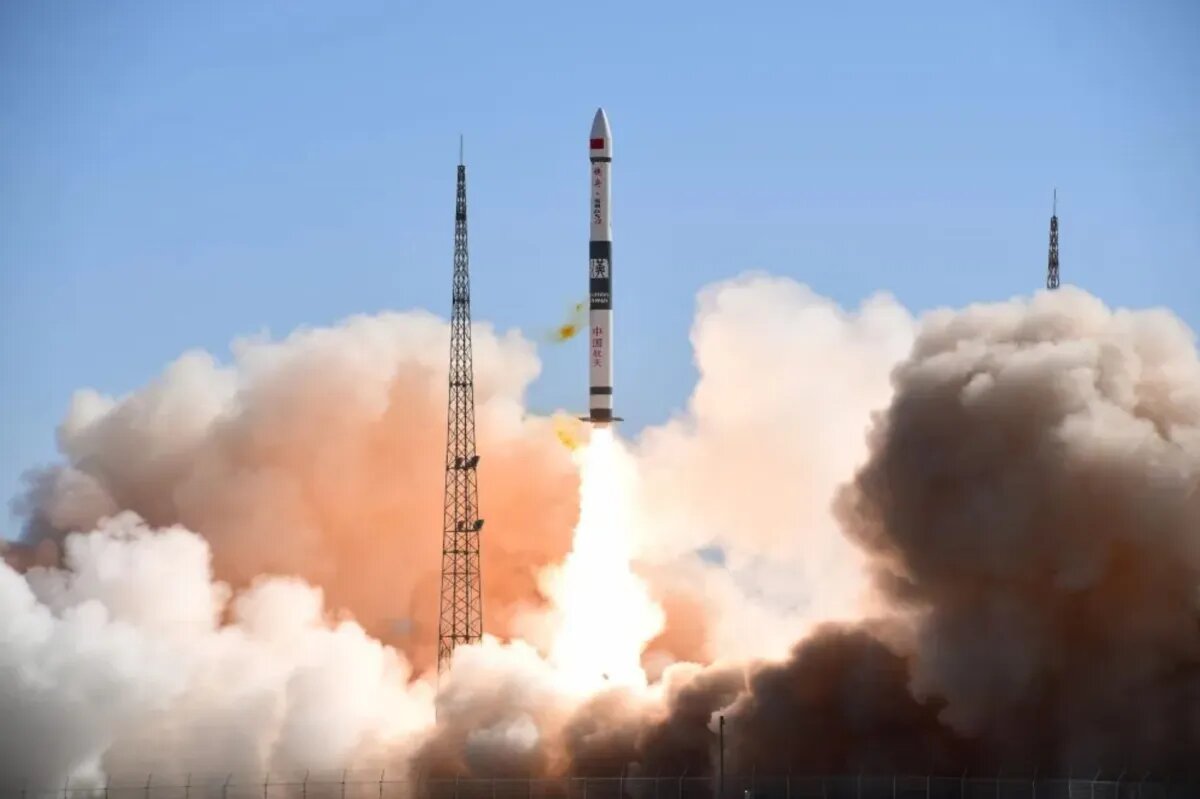A big Chinese state-owned defense company is getting ready to launch the first satellite for a constellation in a very low Earth orbit.
The China Aerospace Science and Industry Corporation (CASIC) told Chinese state media in early March that its first satellite for a group of satellites in very low Earth orbit (VLEO) will launch in September.
VLEO satellites orbit between 150 and 300 kilometers high, which is much lower than most other satellites. At these lower altitudes, the atmosphere pulls on a satellite’s orbit faster, so it needs to be propelled to keep it from falling out of orbit too quickly. However, these lower altitudes offer cost and performance benefits in the form of lower power needs for data transmission, faster data transfer, less solar power generation, and higher resolution observations.
According to the Chinese-language Science and Technology Daily, the first CASIC VLEO satellite will try to show and test key technologies like “ultra-low orbit flight technology,” “high-resolution ground imaging technology,” “onboard intelligent processing and data transmission technology,” and “ultra-low orbit flight technology.”
Details like how long the satellites are supposed to last, how big the constellation will be, and how often they will be launched were not given.
CASIC is a state-owned space and defense company that is related to CASC, which is China’s main space company and is in charge of most of the country’s civilian and military space projects.
The conglomerate, on the other hand, has a role to play and has been trying to grow in recent years with what it calls “commercial plans” for LEO broadband and narrowband constellations and its Kuaizhou solid rocket series.
In Wuhan, CASIC has a place where they make satellites and rockets. They are also working on the “Tengyun” reusable space plane. Through its launcher operator branch, Expace, CASIC plans to launch its Kuaizhou-1A and Kuaizhou-11 rockets 8–10 times in 2023.
In the past few years, VLEO ideas have come up in both the U.S. and Europe. American companies Skeyeon, Earth Observant, and Albedo have raised money for VLEO satellite plans, and the European Union gave money to the “Discoverer” research program to look into putting Earth observation satellites in much lower orbits than usual.
Science and Technology Daily says that China’s 14th Five Year Plan, which runs from 2021 to 2025, lists global remote sensing with higher resolution, more frequent visits, and faster transmission speeds as a key space infrastructure.
In a possible related event, the Tianxing-1 satellite (NORAD 52902), which was launched in June 2022 on a Kuaizhou-1A rocket, fell back into Earth’s atmosphere on March 29. Space Force tracking of space.
The satellite’s orbit used to be around 300 kilometers, but it has been getting smaller and smaller over the past month. The Chinese Academy of Sciences made the satellite as part of a plan for the 14th Five-Year Plan. For technical verification tests, it also carried data acquisition and optoelectronic payloads for CASIC.
